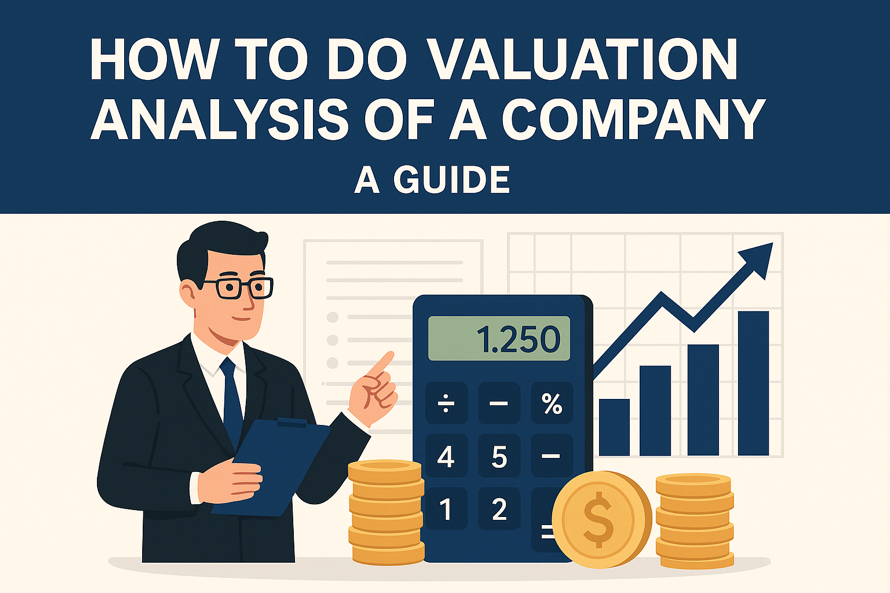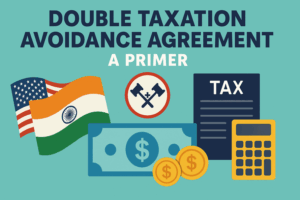
Every business carries a number. Not the kind on its balance sheet, the real one, the figure that says what it’s truly worth in the market. That number changes with time, mood, performance, and perception.
Valuation is how investors, founders, and bankers decode that number. It’s the language of deals, investments, and takeovers. The art that turns a company’s story into a financial figure. When you perform a valuation analysis of a company, you’re doing more than just math.
Why Valuation Matters for Investors and Businesses
For investors, valuation is a filter. It separates noise from opportunity. Two firms can have the same profit, but one might be trading at twice the price. Why? Because the market sees something else: it could be scale, management quality, or potential.
Without valuation, you’re walking blind. You either overpay for a dream or underprice a gem.
For founders, valuation decides power. It sets your worth when raising capital, negotiating partnerships, or selling a stake. A fair number gives leverage. An inflated one builds expectations that become impossible to meet.
When to Conduct a Valuation Analysis
Valuation isn’t a once-a-decade thing. It’s an ongoing pulse check.
You run a valuation before bringing investors on board. You update it before selling shares or merging with another business. You reassess it when the market changes, when policies shift, or when a competitor disrupts your sector.
Even private companies, those not listed on the stock markets, need periodic valuations to measure growth and prepare for future funding.
Key Approaches to Company Valuation
There’s no single path to finding a company’s value. Think of valuation like photography. You can shoot the same subject with different lenses; each gives a unique angle.
Analysts generally use three main methods:
Asset-Based Valuation Method
This is the simplest way to look at value: what does the company own, minus what it owes?
You take all tangible and intangible assets, subtract liabilities, and you get the net asset value. It’s like checking what would remain if the business shut down today and sold everything it had.
This approach works best for asset-heavy businesses such as manufacturing, infrastructure, and real estate. But it struggles with modern models. Try valuing Google or Swiggy this way and you’ll miss their real worth.
Income-Based Valuation (DCF Method)
The Discounted Cash Flow (DCF) method is where finance meets foresight. It answers one big question: how much are tomorrow’s earnings worth today?
Here’s how it works. You project the company’s future cash flows, revenue minus costs, adjusted for taxes and reinvestments. Then you discount them back using a rate that reflects the business’s risk profile. That rate is usually the Weighted Average Cost of Capital (WACC).
The result gives the present value of those future earnings. It’s elegant, logical, and powerful when done right.
The catch? DCF is fragile. Change one assumption, growth rate, discount rate, or terminal value, and the final number swings wildly.
Market-Based Valuation (Comparable Companies)
Markets, in their own chaotic way, are great at setting benchmarks. That’s the idea behind the market-based method.
Instead of guessing, you look around. You compare the company with similar ones in the same sector, size, and stage. You observe how the market values those peers, their P/E ratios, P/B ratios, or EV/EBITDA multiples.
Then, by applying those averages to your company’s metrics, you estimate what it should be worth. This method feels practical because it’s rooted in real transactions and live pricing. But markets can be emotional. When hype dominates, valuations balloon.
Step-by-Step Valuation Process
Valuation isn’t guesswork. It follows a process, part investigation, part analysis, part storytelling.
Step 1: Analyze Financial Statements
Start with the company’s financials. Look at the income statement, balance sheet, and cash flow. Not just the numbers, the patterns. Is revenue growing consistently? Are margins stable? Is debt manageable?
Scrub out distortions, one-time gains, tax write-offs, or extraordinary items that make performance look better or worse than it really is.
Step 2: Choose the Appropriate Valuation Method
There’s no universal method. The right one depends on the company’s maturity and predictability.
A factory with heavy machinery fits an asset-based lens. A consumer brand with strong, stable cash flow suits DCF. A new-age startup with little profit but high traction? That’s where market comparables or revenue multiples make more sense.
Step 3: Forecast Future Cash Flows
This step separates analysts from amateurs. Anyone can project numbers; few can project them credibly.
Forecasts should grow out of logic, not optimism. Study the company’s past performance, market size, and competitive position.
Step 4: Calculate Discount Rate or Multiples
If you’re using DCF, calculate the discount rate, typically the company’s WACC. It blends the cost of equity and debt, weighted by capital structure. A high-risk firm demands a higher discount rate; a steady utility company gets a lower one.
Step 5: Arrive at Intrinsic or Fair Value
Now comes the moment of truth. Combine your assumptions, discount or multiply accordingly, and you get the company’s intrinsic value.
Valuation Metrics and Ratios to Know
Every valuation analyst keeps a mental toolkit of ratios. They aren’t magic numbers, but they make comparison faster and cleaner.
Price to Earnings (P/E) Ratio
This is the most quoted ratio in investing. It tells you how much investors pay for each rupee of profit.
A P/E of 10 looks cheap, a P/E of 60 looks pricey, but context matters. A slow-growth manufacturer with a P/E of 10 may be fairly valued. A high-growth tech company with a P/E of 60 may still be reasonable if earnings are set to explode.
Price to Book (P/B) Ratio
P/B compares the market value with the book value, the company’s net assets. A ratio under one can signal undervaluation or hidden trouble. A higher P/B means investors expect returns beyond physical assets, brand power, intellectual property, or customer loyalty.
EV/EBITDA and Other Market Multiples
Enterprise Value (EV) to EBITDA filters out capital structure and tax differences, showing how the market values a company’s core operations.
It’s popular for comparing firms in the same sector because it focuses purely on operational efficiency.
Tools and Resources for Valuation Analysis
Modern analysts have an advantage. What used to take weeks can now be modeled in hours.
Platforms like Bloomberg Terminal, Capital IQ, Finbox, or FactSet pull live data, automate DCF models, and let analysts test assumptions instantly.
Data Sources and Market Comparables
Reliable valuation depends on reliable data. Analysts extract details from audited reports, regulatory filings, and stock exchange disclosures. Market comparables come from aggregators like Refinitiv, Morningstar, or Moneycontrol. But data without context is not helpful.
Common Pitfalls to Avoid in Valuation
Even professionals mess this up. The problem isn’t a lack of skill; it’s human bias.
Overly Optimistic Projections
Analysts fall in love with stories. They overestimate growth and underestimate competition. The result? Overvaluation.
Good valuation feels a little uncomfortable, conservative, even cautious. It’s fine to believe in a company’s future, but your model should survive reality checks.
Ignoring Industry Trends or Risks
A company’s numbers can look flawless until the industry shifts under its feet. Remember Kodak? Nokia? Ignoring external changes can turn accurate math into fiction.
Misapplying Multiples or Discount Rates
Applying a peer multiple blindly is lazy analysis. Each company’s risk, capital cost, and cash flow pattern differ. A fintech startup’s discount rate cannot equal that of a cement plant.
Conclusion: Mastering Valuation for Smarter Investment Decisions
Valuation isn’t a science or art; it’s both. The spreadsheets handle precision, but experience interprets meaning. A good analyst doesn’t chase the perfect number. They chase understanding. They know valuation won’t predict the future, but it helps avoid costly mistakes in the present. Doing a valuation analysis of a company teaches you discipline.
FAQs
What is the most accurate method to value a company?
No single method fits all. DCF provides depth, market comparables show sentiment, and asset-based methods reveal floor value. The best analysts blend all three.
How is valuation different for startups vs mature companies?
Startups rely on projections and potential, so revenue multiples dominate. Mature companies depend on stable earnings, making DCF and profit-based models more effective.
What are the key assumptions in DCF valuation?
Projected growth, discount rate, and terminal value. Even slight changes here can swing valuation significantly, so they demand realistic thinking.
How often should a company’s valuation be updated?
At least once a year, or whenever a major event happens, new funding, acquisition, or market shift. Regular updates keep decision-making grounded.
Can I perform a valuation without access to full financial data?
To a limited extent. Peer multiples and revenue estimates can offer a rough view, but complete data gives clarity and confidence. Use partial data only for directional insight.







